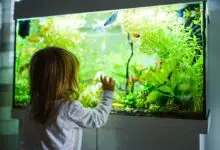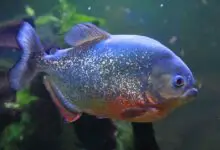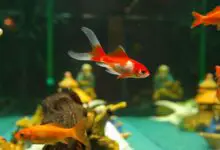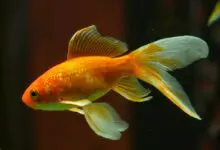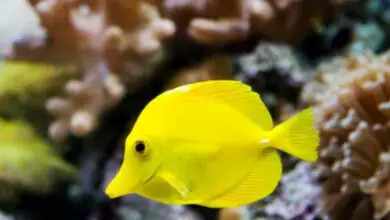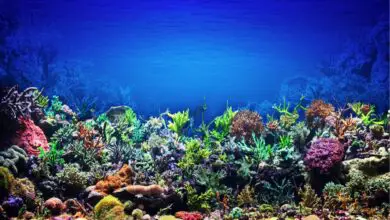Maintaining a Healthy Aquarium Environment to Keep Fish Healthy

Aquarium fish rely on balanced, clean water to stay healthy. But small tanks are fragile – things can go wrong quickly! By routinely checking key water measures and keeping a few crucial factors in proper zones, you prevent stressful drops in quality. Monitoring water chemistry stops illness before fish get sick and die.
We’ll break down the top things every fish owner must measure in their aquarium plus what to do if a level falls to concerning ranges. No advanced chemistry needed – only regular observation and simple corrections! This keeps disease outbreaks away and enables long healthy lives swimming about.
Why Water Quality Matters in Aquariums
Fish absorb water constantly – it touches their gills, scales and skin. Good water keeps immune systems running while bad water weakens fish until diseases take hold. In small enclosed tanks, any pollution becomes concentrated fast compared to big ponds and rivers!
Without water testing and partial cleaning, nitrogen waste, pH shifts and reduced oxygen pile up to dangerous points often invisible to our eyes. But fish bodies feel the difference right away. Keeping the water fresh avoids these unseen issues!
Maintaining Proper Warmth
As cold blooded creatures, fish depend on water temperature staying in a comfortable zone similar to their natural environment. Tropical species for example need 78-82° F generally. If tank warmth drops or rises significantly outside this steady range fish prefer, it throws off body functions.
Use submersible thermometers to check current tank heat levels. Adjustable aquarium heaters also raise too-cool water to maintain a stable temperature. Make sure you have a heater with adequate wattage for the tank size. Fluctuations under/over ideal warming ranges stress fish and make illness develop faster!
Tracking Both pH Rise and Fall
The pH scale indicates how acidic or alkaline the water is currently – a major indicator of quality. A neutral pH reads around 7. Levels lower than 7 mean acidic water, while higher numbers signal alkaline conditions.
Fish can adapt to a wide range of pH but prefer clean, clear water with moderate, steady pH similar to their native waters. Use testing kits or strips to check your tank for pH swings, which stress inhabitants. Try to keep things as close to the pH fish thrive at even if that means small gradual corrections – extremes hurt!
Stopping Toxin Release from Excess Waste
Fish foods and solid waste break down over days into compounds like ammonia that damage health at high levels. This is where “tank cycling” helps – beneficial bacteria multiplying to convert toxins to safer byproducts. Establishing healthy bacteria colonies takes patience but crucial before adding fish!
Use master test kits to accurately check ammonia and nitrite levels in water. Even ammonia showing only .25ppm burns gills and weakens immune systems considerably. If these post-waste toxins register at all once fish occupy tanks, do larger water changes to bring them back down through dilution. Supplements help too. Keep converting byproducts at zero!
Ensuring Adequate Oxygen Reaches Fish
While oxygen naturally dissolves from air into water simply by surface movement, stocked tanks use up dissolved oxygen faster than replacement rates. Stagnation also impedes gas exchange. Make sure tank chemistry facilitates adequate oxygen!
If you notice fish gasping near the surface, oxygen measures are too low – upgrade aeration! Air stones, bubble wands, surface ripples and waterfalls increase diffusion of air into water for fish to breathe easier through their gills and bloodstream. Proper aeration prevents suffocation disasters!
Adjusting Water Hardness Step-by-Step
Water “hardness” tells us the amount of dissolved mineral content from elements like calcium and magnesium. Soft water contains few while hard water has high mineralization. Fish vary in hardness preferences. Most community species tolerate soft to moderately hard conditions well.
Test current water hardness using test strips or electronic meters. If very soft or liquid rock levels register, mixing some distilled or rainwater into tap water over a series of small water changes gradually reaches safer ground. African cichlid hobbyists alternatively prefer harder water, using mineral supplements.
Removing Chlorine/Chloramines from Tap Water
Treating replacement aquarium water matters too! Tap water contains chlorine and sometimes chloramines as disinfecting agents. These chemicals harm gills and burn skin at low doses if not removed prior to water changes and top offs!
Always dechlorinate new water before it enters tanks. Bottled water conditioners neutralize chlorine/chloramines and also bind metals present in some water pipes. Add the recommended dosage after temperature matching and before mixing new tap water into the aquarium. Keep things detoxified!
Clearing Cloudy Water Conditions
Turbid, cloudy water not only looks unpleasant but also harms fish health long term. Particles clogging gills, reducing oxygen and light cause issues. Bacteria overgrowths or particulate waste often source cloudiness.
Filter optimization helps remove floating bits along with gravel vacuuming. Floss cartridges and micron pad mechanical stages catch debris. If bacterial blooms trigger clouds, allow a few weeks for cycling processes to catch up – numbers fade. Consider adding Purigen type media too for clearing organics!
Isolating Sick Fish Before Treating Disease
Despite meticulous monitoring, sometimes fish still get sick. Recognize early signs like clamped fins, flashing, spots and appetite loss. Rather than instantly medicating display tanks, temporary hospital tanks let you closely treat individuals without disrupting biofiltration!
Move fish once identifying illnesses into 10-20 gallon quarantine setups. Add air stones, heaters, plants and hiding spots so they feel secure while receiving antique fungal treatments as necessary. With TLC in medicated baths, fish often recover well in isolation over 2-4 weeks!
Recording Water Chemistry to See Trends
Jotting down test measurement in notebook logs lets you track gradual shifts as opposed to relying purely on memory. Over weeks, trends toward rising nitrates for example might indicate increasing waste accumulation needing more frequent water replacement. Data aids early intervention!
Additionally embrace aquarium controller units and smart phone apps that log critical parameters like pH electronically round the clock. They sound programmable alarms if readings go out of defined safe ranges so no daily testing needed. But always have alternate test kits around too just in case!
Reviewing Top Water Quality Must-Knows
There we have it – mastering a few fundamental water quality indicators prevents undesirable disease outbreaks and fish loss disasters!
- Maintain stable, appropriate water temperature
- Test pH routinely, making minor adjustments toward ideal targets
- Facilitate complete nitrogen cycling keeping compounds in check
- Ensure adequate dissolved oxygen reaches fish avoiding suffocation
- Detoxify tap water from harmful disinfectant chemicals
- Filter both particulate debris as well as dissolved organics
Monitoring water enables long term success where fish thrive beautifully for years rather than struggle.
